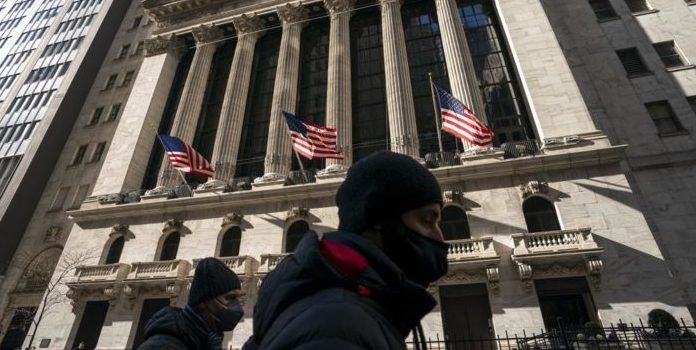(Headline USA) As the Federal Reserve intensifies its efforts to tame high inflation, caused many critics contend by failing policies implemented by the Biden administration, its top officials are casting their aggressive drive in a new light: As a blow against economic inequality.
That thinking marks a sharp reversal from the conventional view of the Fed’s use of interest rates, which typically rely on hard facts and not woke emotion. Normally, the steep rate hikes the Fed is planning for the coming months would be seen as a particular threat to disadvantaged and lower-income households. These groups are most likely to suffer if rate hikes weaken an economy, cause unemployment to rise and sometimes trigger a recession.
Instead, some of the most dovish Fed officials, who typically favor low rates to nurture the job market, are now going out of their way to point out ways in which inflation falls hardest on poorer Americans. Curbing high inflation, they argue, is a fairness issue.
The burden of high prices “is particularly great for households with more limited resources,” Lael Brainard, an influential member of the Fed’s Board of Governors and a longtime interest rate dove, said in a speech Tuesday. “That is why getting inflation down is our most important task.”
Brainard noted that food and energy together account for one-quarter of the price spikes that have driven inflation to 40-year highs. Poorer Americans spend about one-fourth of their incomes on groceries and transportation, she said, while wealthier households spend less than one-tenth.
Members of Congress from both parties generally agree that the Fed must tackle the surge in inflation by steadily raising rates, which will make many consumer and business loans costlier. Indeed, most economists have said the Fed has waited too long to do so and now runs the risk of having to tighten credit too fast and derailing the economy. Last month, the Fed raised its key rate from near zero to a range of 0.25% to 0.5%.
Still, some Democrats have expressed concern that higher rates will slow hiring significantly, even while unemployment for black workers, for example, remains higher than that for whites.
“We clearly have a long way to go when it comes to making sure everyone has a good quality job,” Sen. Sherrod Brown, an Ohio Democrat, said last month at a hearing on Jerome Powell‘s nomination for a second four-year term as Fed chair. “Hiking up interest rates too early can depress job growth.”
Brainard’s speech this week was one of the starker examples of the Fed’s argument that inflation can exacerbate inequality. Brainard, who has been nominated for the Fed’s No. 2 role and is part of Powell’s inner circle, said that lower-income households — defined as the poorest one-fifth — spend 77% of their income on necessities, including food and housing. By contrast, the richest one-fifth spend just 31% of their incomes on those categories.
Likewise, Mary Daly, president of the Federal Reserve Bank of San Francisco and long a dovish voice on the Fed’s policymaking committee, surprised Fed watchers this week when she declared that “inflation is as harmful as not having a job.”
“I understand … that if you have a job (but) you can’t pay your bills, or I feel like I can’t save for what I need to do, then that’s keeping you up at night,” Daly said in remarks to the Native American Financial Officers Association.
Brainard had highlighted one reason for taking a more patient approach in a speech in February 2021. In those remarks, she said that raising rates to pre-empt inflation “may curtail progress for racial and ethnic groups that have faced systemic challenges.”
Powell and other Fed officials say their goal now is to reduce inflation by slowing, but not stopping, growth. Reducing high inflation is important to keep the economy expanding, they say, and, ultimately, to keep unemployment low.
Fed officials don’t think their key rate will start to restrain growth until it reaches about 2.4%.
The minutes from the Fed’s most recent meeting in March, released Wednesday, showed that the officials want to “expeditiously” reach that level, and economists expect them to do so by the end of this year. At that point, if inflation is still too high, the Fed might have to raise rates further, to a point where layoffs occur and the risks of a recession rise.
“That’s when it will get sticky and challenging for the Fed — when those short-run trade-offs arise,” Sheets said.
Adapted from reporting by the Associated Press

